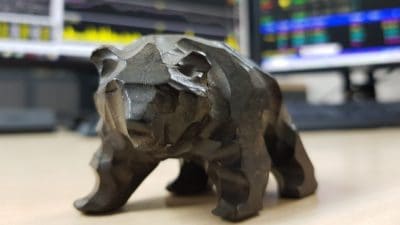Right now I’m comparing some of the most popular companies in the FTSE 100 with their sector peers in an attempt to establish which one is the more attractive investment.
Today I’m looking at Rio Tinto (LSE: RIO) (NYSE: RIO.US).
Valuation
So let’s start with a look at Rio’s valuation in comparison to its closest peers and the wider sector.
Unfortunately, like much of the mining sector, Rio reported a number of one-off write-downs during 2012 as several of its mining projects were written off. This means that Rio reported a loss for the year.
However, after excluding these one-off losses, Rio is trading at a historic P/E of just 10.2, lower than the mining sector average of 11.1.
What’s more, Rio’s closest London listed peers, BHP Billiton and Glencore Xstrata trade at historic P/E ratios of 14.2 and 12.5 respectively.
Balance sheet
| Net-debt-to-assets | Interest cover by operating profit | |
|---|---|---|
| Rio | 17% | N/A |
| BHP | 21% | 15x |
| Glencore | 31% | 1.7x |
When it comes the balance sheet, it would appear that Rio sits in a better position than its close peers. However, due to Rio’s 2012 loss it is not possible for me to calculate the company’s interest cover by operating profit.
Still, even though Rio has the lowest net-debt-to-assets figure of the group, the company’s net debt has expanded 220% during the last three years alone. Having said that, BHP’s debt has grown even faster and the company’s net debt is up nearly 400% since the end of 2011.
Company’s performance
| Earnings growth past five years | Net profit margin | |
|---|---|---|
| Rio | -23% | N/A |
| BHP | 15% | 17% |
| Glencore | -36% | 0.5% |
Once again it is not possible for me to calculate Rio’s 2012 net profit margin.
Nonetheless, during the past five years Rio’s adjusted earnings have only shrunk, unlike those of BHP which have actually expanded.
| Current Dividend Yield | Current dividend cover | Projected annual dividend growth for next two years. | |
|---|---|---|---|
| Rio | 3.2% | 3 | 8% |
| BHP | 3.7% | 1.9 | 6% |
| Glencore | 2.8% | 2.8 | 3% |
| Sector average | 3.3% | 2.7 |
However, when it comes down to dividends Rio’s figure look the most impressive out of the trio. Indeed, the company’s dividend yield is around the same as the sector average, although it lags that of BHP.
Still, Rio’s payout is covered three times by earnings, which gives the company plenty of room to maintain or increase its payout even if earnings fall — like they did during 2012.
Foolish summary
All in all, while Rio does have some faults the company’s balance sheet is strong and the company’s dividend is covered well enough to meet the high single-digit growth predicted by City analysts during the next two years.
In addition, despite being the world’s second largest miner by market capitalization after BHP, Rio is trading at a discount to its wider sector.
So overall, I feel that Rio Tinto is a much stronger share than its peers.







